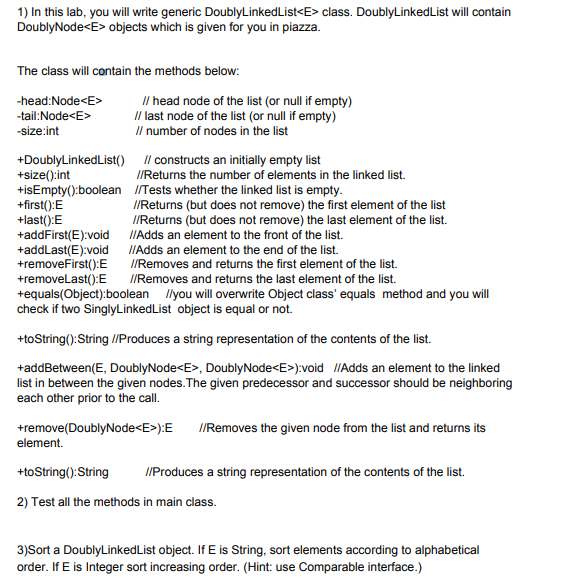Answered step by step
Verified Expert Solution
Question
1 Approved Answer
Node class: public class Node { /** The element stored at this node */ private E element; // reference to the element stored at this

Node
public class Node1) In this lab, you will write generic DoublyLinkedList{ /** The element stored at this node */ private E element; // reference to the element stored at this node /** A reference to the subsequent node in the list */ private Node next; // reference to the subsequent node in the list /** * Creates a node with the given element and next node. * * @param e the element to be stored * @param n reference to a node that should follow the new node */ public Node(E e, Node n) { element = e; next = n; } // Accessor methods /** * Returns the element stored at the node. * @return the element stored at the node */ public E getElement() { return element; } /** * Returns the node that follows this one (or null if no such node). * @return the following node */ public Node getNext() { return next; } // Modifier methods /** * Sets the node's next reference to point to Node n. * @param n the node that should follow this one */ public void setNext(Node n) { next = n; } }
Step by Step Solution
There are 3 Steps involved in it
Step: 1

Get Instant Access to Expert-Tailored Solutions
See step-by-step solutions with expert insights and AI powered tools for academic success
Step: 2

Step: 3

Ace Your Homework with AI
Get the answers you need in no time with our AI-driven, step-by-step assistance
Get Started


